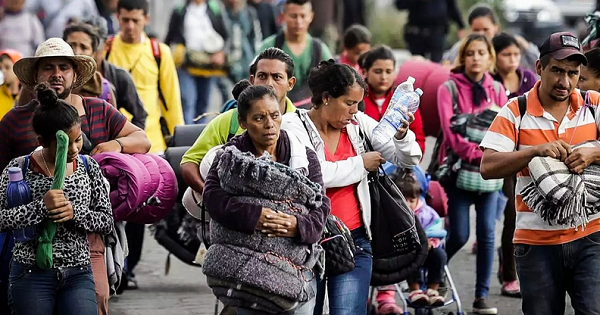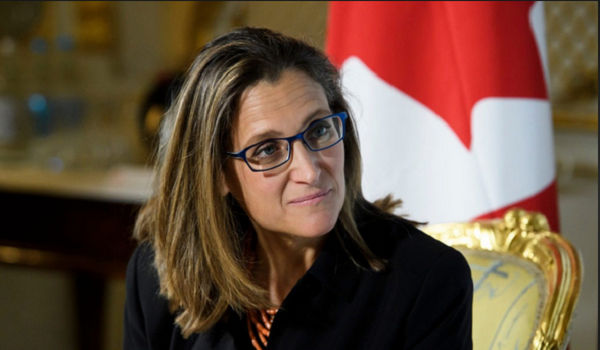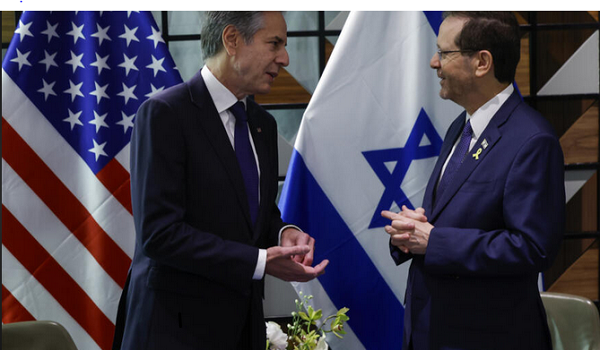Canada border officers and their U.S. counterparts investigating smuggling operations of Mexicans over to America
Canada’s border officers have successfully disrupted recent operations linked to organized crime to smuggle Mexicans and others into the United States, according to the head of intelligence at the Canada Border Services Agency.
Dan Anson said Canadian border officials are working closely with their U.S. counterparts and the RCMP to investigate smuggling operations of Mexicans who fly to Canada without the need of a visa and then enter the United States illegally through Canada’s vast southern border.
Mr. Anson, director-general of intelligence and investigations, said the CBSA has had a lot of recent successes disrupting southbound people-smuggling, and has identified routes to the United States, mostly in Southern Ontario, including at Niagara Falls.
In an interview, he said the agency and partners are investigating to identify “the facilitators and the organizers that are taking people into Canada and then trying to organize to smuggle southbound.”
“We’ve had a number of interdictions recently,” he said. “People will exploit the ability to come to Canada and then move southbound.”
He said no particular Mexican cartel was known to be running the smuggling operations. But members of organized crime groups have been identified as being involved.
“It might be a cartel member, associate, somebody just involved in serious or organized crime that is involved in the trafficking or smuggling of persons,” Mr. Anson said.
Prime Minister Justin Trudeau said last week that organized crime is playing a role in bringing some asylum seekers from Mexico to this country.
Immigration Minister Marc Miller is considering whether to impose a visa requirement on Mexican visitors after a sharp increase in asylum claims from Mexicans, most of which have been denied.
“We have noticed that there are patterns and people that will try to exploit a lawful ability to enter Canada and then proceed southbound,” Mr. Anson said.
He said intelligence from international partners was helping to identify smuggling networks, while intelligence gleaned in Canada was helping such partners to “take a more robust posture at their border and potentially with a certain geographic focus.”
Before joining the CBSA, Mr. Anson was an intelligence officer in the military, where he specialised in human intelligence and as a source handler. At a hearing of the Commons intelligence committee this month, he said the agency was investigating 171 cases of human smuggling, with some complex cases lasting years.
He said a division specializing in identifying fake documents is helping spot people with links to organized crime trying to enter Canada at airports, ports and border posts.
He said if someone is identified by CBSA as being a member of an organized crime group abroad, its intelligence officers look into who they travelled with, how they got to Canada, their transfer point, layovers and methods they have used, as well as their associates. If they identify 10 associates they can then investigate them to build up a pattern and get a clearer picture of their operations.
“Did they fly somewhere and then stay there and then have a long layover? Are there methods of exploiting visa free travel somewhere else?” he said.
Human smuggling involves arranging illegal entry into a country, and generally involves the consent of the person smuggled, often with payment. But people who are trafficked are often coerced against their will and exploited, with some forced into the sex trade.
He said organized crime was also involved in human trafficking, including of young women into the sex trade, and the smuggling of guns and drugs, including opioids.
“Organized crime groups are pervasive in any kind of illicit activities. So wherever you see one type of crime, you tend to see those lead into other streams as well. So narcotics and firearms will tend to be related,” he said. “Anytime you serve a search warrant on certain types of sites, you’re going to find evidence and other types of criminality.”
Identifying chemicals used to produce drugs such as the synthetic opioid fentanyl or methamphetamine is currently a big priority.
There are now designated safe-sampling areas and “a whole suite of different types of tactically located testing and examination facilities to identify precursor chemicals or opioids,” including at ports, he said.
The agency also verifies if such precursor chemicals used in the drugs trade have been imported for a legitimate purpose with a licence.
He said concealment methods for drugs were becoming more ingenious, and a variety of detection methods – including using technology, traditional searches and sniffer dogs – are employed.
Clues from human behaviour often give smugglers away at the border, he said. A driver under duress may be a sign there are people concealed in their vehicle.
“Maybe there’s something that you see in the cab that indicates that you might want to have a better look at this person,” he said.
“Maybe there’s too much control of the documents, maybe there’s some indicators of potential smuggling activities or forced trafficking. But also it could be somebody that just has an irregular traffic pattern – maybe the half hour they spend in the United States doesn’t add up.”
This article was reported by The Globe and Mail












